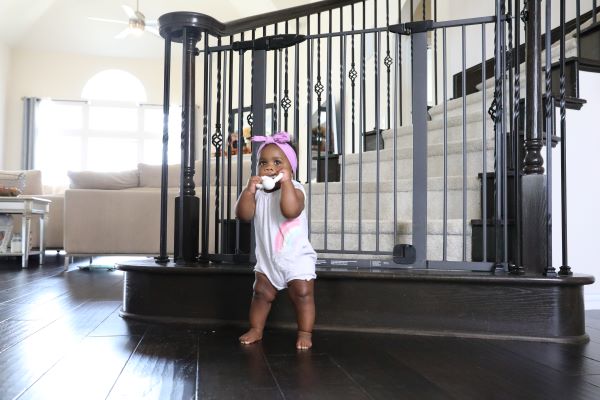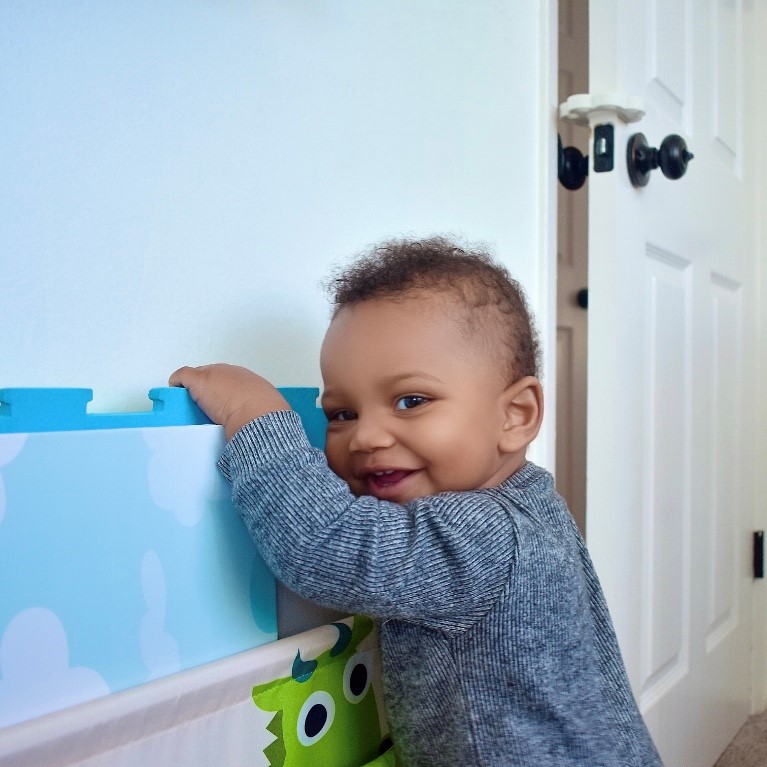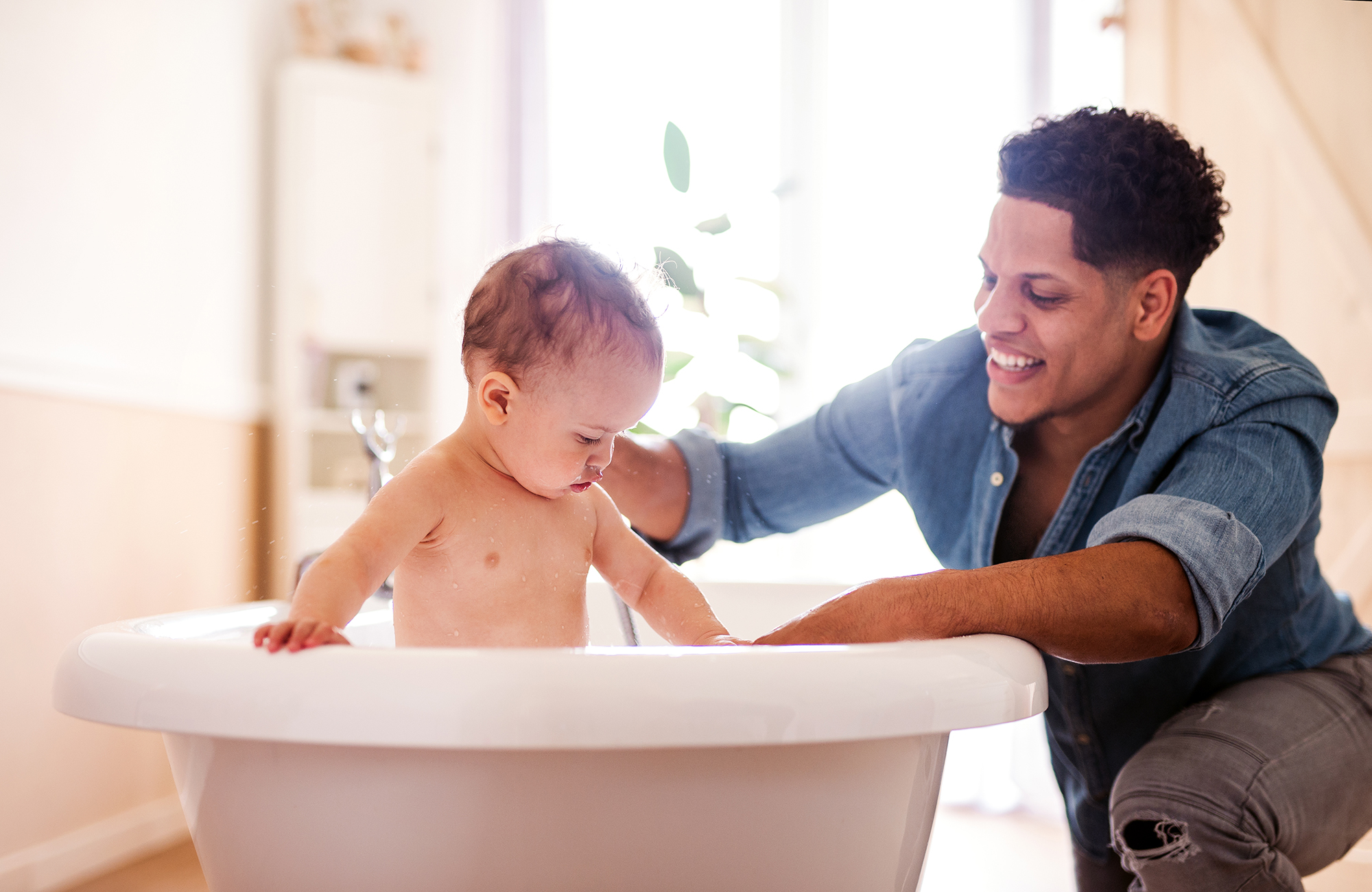5 Childproofing Tips for Your Mobile Baby
Jan 29th 2020
Whether you’re expecting your first child, your baby is rolling over, or they’re starting to crawl, here are a few tips for providing a safe environment for your baby.
Childproofing the home is an important part of safely raising a child. But remember, childproofing is not one-size-fits-all. When your baby reaches different levels of mobility—crawling, toddling, walking—you will have to ramp up your protective tactics. So, as you’re getting ready to protect your home for your little ones, keep these five safety tips in mind:
1. Be Strategic with Safety Gates

Riverstone Extra Tall & Wide Gate Photo credit: Morgan Goodwin
2. Practice Crib Safety
3. Use Locks, Latches and Covers
- Attach an Adjustable Strap Lock to your toilet.
- Store all toiletries and cleaning products on high shelves or in cabinets with childproofing items installed, such as a Large Sliding Cabinet Lock, Corner Drawer Lock, or Drawer & Cabinet Tab Latch. Remember, even perfume, nail polish remover, baby oil, mouthwash, rubbing alcohol and deodorizers can be hazardous.
- Keep all vitamin and medicine bottles tightly closed and stored in a high cabinet far from reach.
- Add Adjustable Strap Locks on dishwashers, ovens, and refrigerators.
- Keep kids out of lower cabinets with a Large Sliding Cabinet Lock or a Rotating Cabinet Latch. Secure any drawers containing knives, scissors, or sharp utensils with a Drawer & Cabinet Tab Latch or Corner Drawer Lock.
- Install a safety cover on the garbage disposal switch to protect little hands from accidentally turning it on.
- Prevent your child from turning on the stove with Appliance Knob Covers.
- Place Plug Protectors over unused outlets. Sliding Outlet Covers are also a great option, as they provide easier access for adults while still keeping little fingers out.
- Use either a Door Knob Cover or Pinch Protector to keep little ones from pinching their fingers in doorways.
- Prevent furniture and televisions from tipping over with a Furniture & TV Strap.

Premium Pinch Protector
Photo credit: Meghan Jenay
4. Prevent Drowning Hazards
- This means that toilets, buckets, sinks, coolers and bathtubs can all pose an in-home drowning risk to your little one. Be sure to store all buckets upside down, empty ice out of coolers, keep toilet lids closed and use Adjustable Strap Locks on the toilet seat, and remember to always drain water out of the bathtub.
- Never leave young kids unattended in a bath, even for a minute.
- Keep little ones out of the pool area by installing a durable fence around the perimeter of your pool.

5. Prepare for Disaster
- Keep a working fire extinguisher in the home and make sure family members know how to use it. Install a smoke detector outside your child’s room.
- Learn first-aid, including CPR and the age-appropriate Heimlich maneuvers.
- Keep important phone numbers stored in your cell phone and another easy-to-find location; include doctors and caregivers, local police and fire agencies, parents' work and cell numbers, neighbors and relatives.
- Talk about the best place or places to take cover in the event of a tornado, windstorm or other natural disaster.
Every parent’s top priority is their child’s safety, and it's never too soon to begin thinking about potential hazards and how they can be made safer. You can even put childproofing items, safety gates and play yards on your baby shower gift registry, because it’s always better to be prepared.
